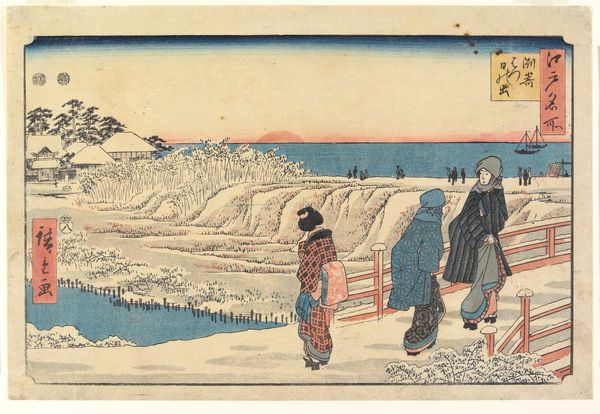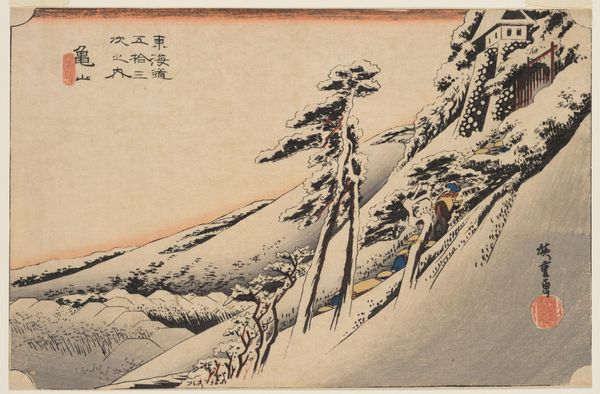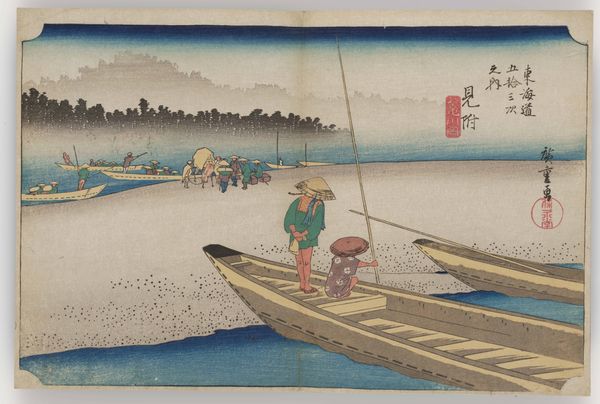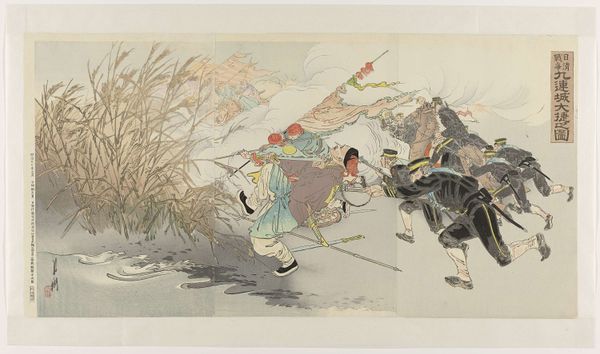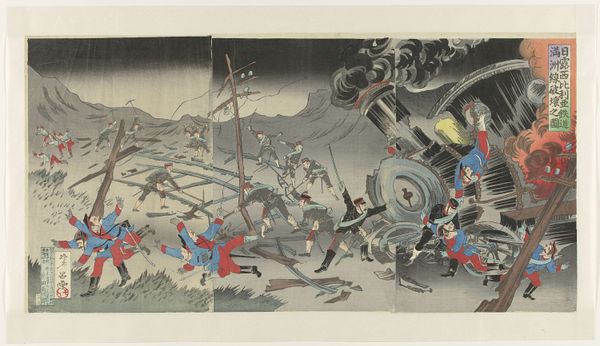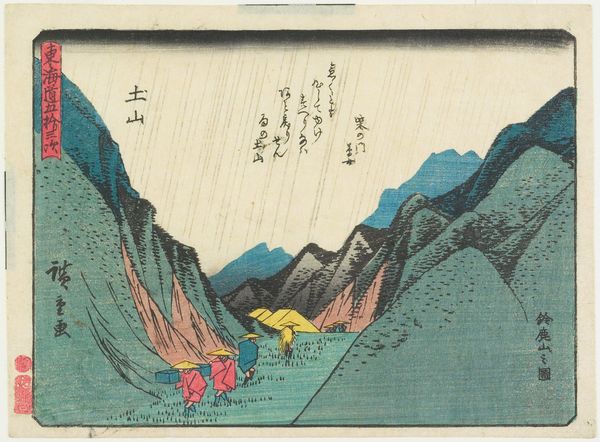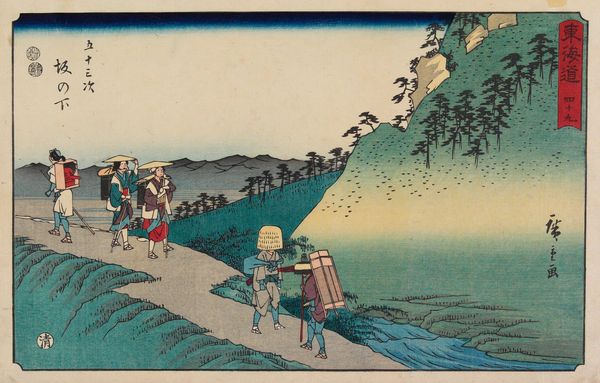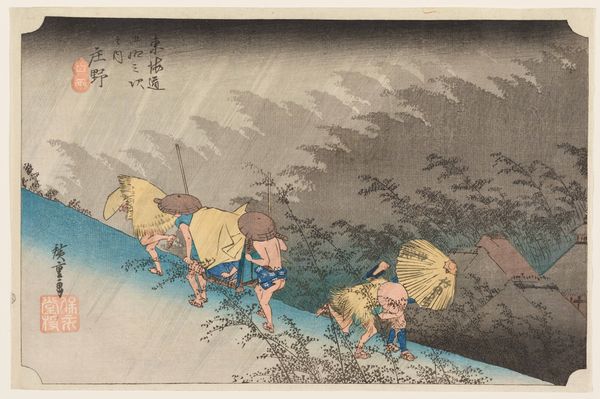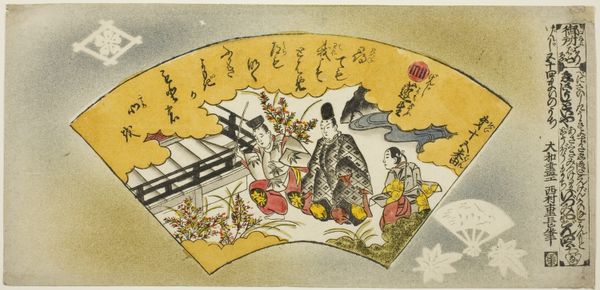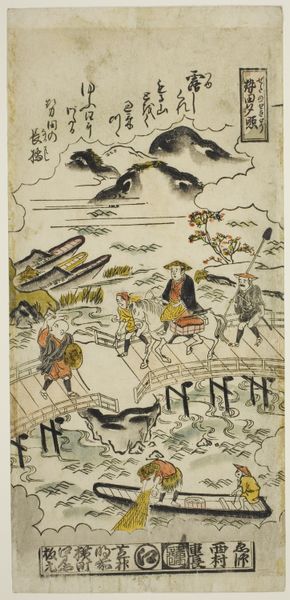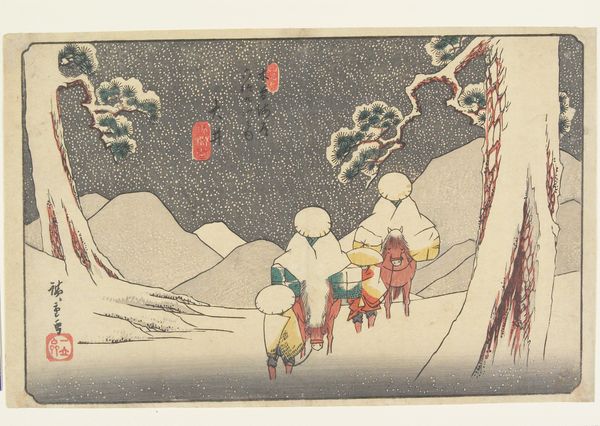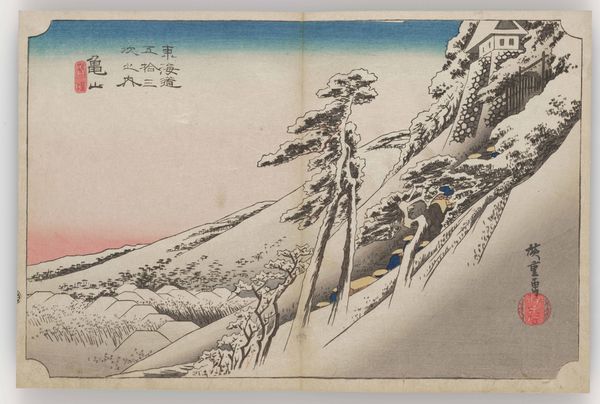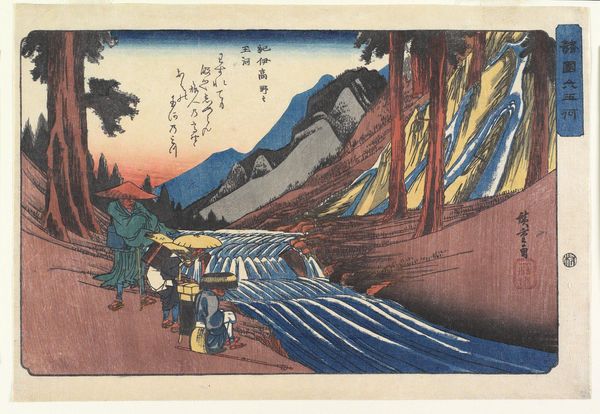
print, watercolor, ink, woodblock-print
#
water colours
#
ink paper printed
# print
#
asian-art
#
landscape
#
ukiyo-e
#
figuration
#
watercolor
#
ink
#
woodblock-print
#
line
#
watercolor
Dimensions: 6 x 6 in. (15.2 x 15.2 cm) (image)7 1/16 x 9 3/8 in. (17.9 x 23.8 cm) (sheet)
Copyright: Public Domain
Curator: Here we have "(Crossing the Togetsu bridge at Arashiyama)," a woodblock print rendered in ink and watercolor on paper. The piece dates back to the 1860s and is by Satō Hōdai. What's your initial impression? Editor: There's a kind of serene isolation, even with the figures crossing the bridge. The palette is muted, almost monochrome, yet there's a vividness suggested by the careful line work. The overall impression is very evocative. Curator: It certainly captures a specific mood. The Ukiyo-e tradition often represents fleeting moments of beauty or pleasure, set within a rapidly changing socio-political landscape. How does this intersect with the presentation of figures on the bridge? Editor: Absolutely. The way these individuals traverse that liminal space, a bridge spanning the river, can symbolize so many crossings, transitions and challenges of the period. There is the political reality as Japan transitioned from feudalism to a new modern era, bringing in all kinds of cultural complexities, shifts of class. Do you see that play out in how these individuals are portrayed? Curator: The artist utilizes what could be described as an almost impressionistic handling of nature— the brushstrokes suggesting texture. This naturalism is interesting when paired with the very stylized depiction of the human figures. Editor: Exactly! The rigid social hierarchies would certainly influence every aspect of lived experience including dress codes, posture, and how individuals would engage with nature in different ways. The very act of crossing this famous bridge becomes fraught with historical connotations. Curator: That interplay really encourages us to delve beneath the image and think about how representation both reflects and reinforces specific cultural frameworks. I also like to reflect on who this art piece was targeted towards; who was the target audience, and what was the perceived purpose of making these sorts of works accessible for circulation at the time? Editor: Considering those power dynamics enhances our understanding of how narratives were crafted. Hōdai, through his rendering of place, social strata, and cultural values, delivers a complex commentary. We should contemplate the visual dynamics present in this historical print, the tension it fosters, and its legacy that remains with us today. Curator: I agree. Considering this piece beyond its aesthetic merits allows it to offer insight into societal complexity that makes us rethink established presumptions. Editor: This deep-dive underlines art’s unique capability to distill complex political landscapes into palpable emotional expressions.
Comments
No comments
Be the first to comment and join the conversation on the ultimate creative platform.

